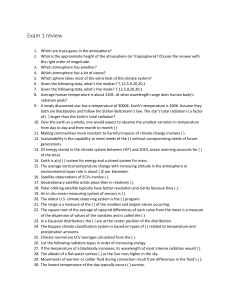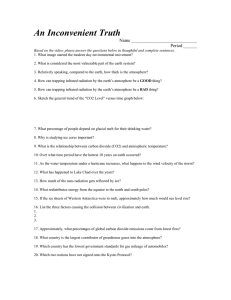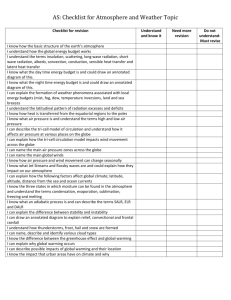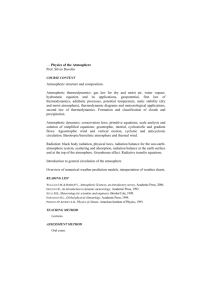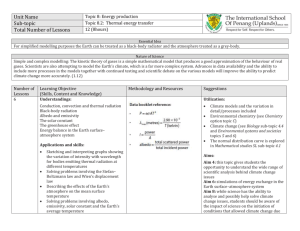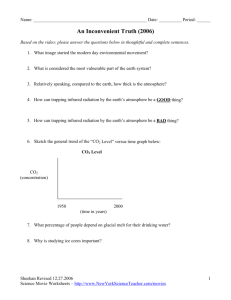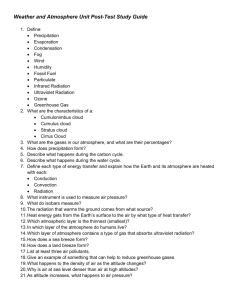PHY 4523 Spring 2000 – Homework 6
advertisement
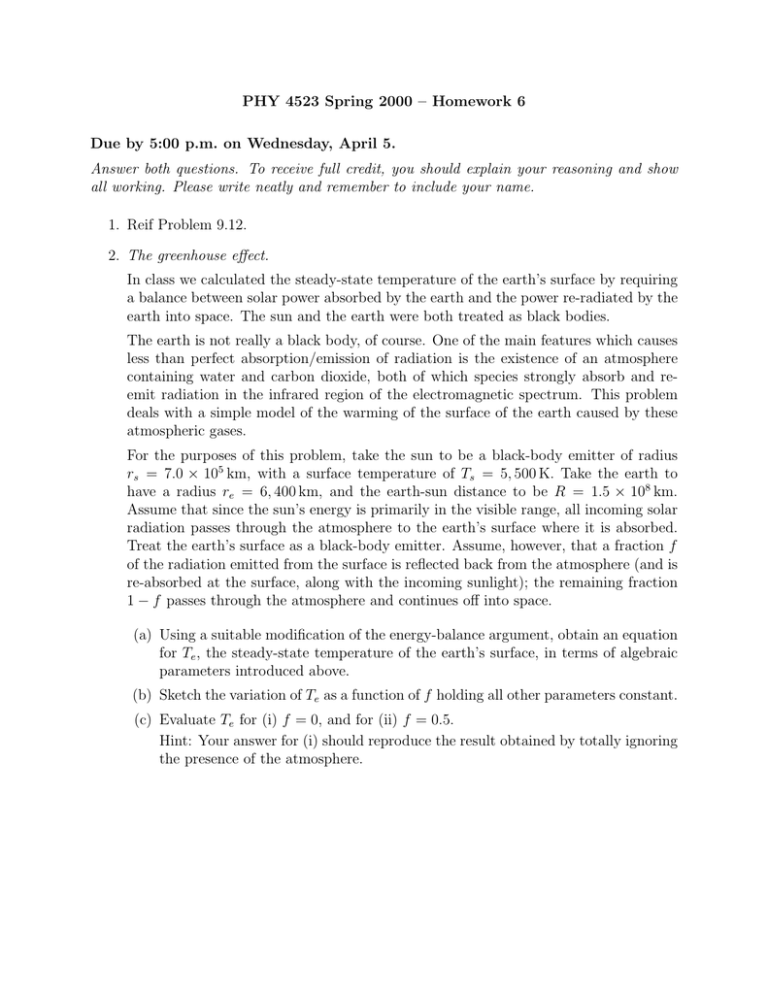
PHY 4523 Spring 2000 – Homework 6 Due by 5:00 p.m. on Wednesday, April 5. Answer both questions. To receive full credit, you should explain your reasoning and show all working. Please write neatly and remember to include your name. 1. Reif Problem 9.12. 2. The greenhouse effect. In class we calculated the steady-state temperature of the earth’s surface by requiring a balance between solar power absorbed by the earth and the power re-radiated by the earth into space. The sun and the earth were both treated as black bodies. The earth is not really a black body, of course. One of the main features which causes less than perfect absorption/emission of radiation is the existence of an atmosphere containing water and carbon dioxide, both of which species strongly absorb and reemit radiation in the infrared region of the electromagnetic spectrum. This problem deals with a simple model of the warming of the surface of the earth caused by these atmospheric gases. For the purposes of this problem, take the sun to be a black-body emitter of radius rs = 7.0 × 105 km, with a surface temperature of Ts = 5, 500 K. Take the earth to have a radius re = 6, 400 km, and the earth-sun distance to be R = 1.5 × 108 km. Assume that since the sun’s energy is primarily in the visible range, all incoming solar radiation passes through the atmosphere to the earth’s surface where it is absorbed. Treat the earth’s surface as a black-body emitter. Assume, however, that a fraction f of the radiation emitted from the surface is reflected back from the atmosphere (and is re-absorbed at the surface, along with the incoming sunlight); the remaining fraction 1 − f passes through the atmosphere and continues off into space. (a) Using a suitable modification of the energy-balance argument, obtain an equation for Te , the steady-state temperature of the earth’s surface, in terms of algebraic parameters introduced above. (b) Sketch the variation of Te as a function of f holding all other parameters constant. (c) Evaluate Te for (i) f = 0, and for (ii) f = 0.5. Hint: Your answer for (i) should reproduce the result obtained by totally ignoring the presence of the atmosphere.
